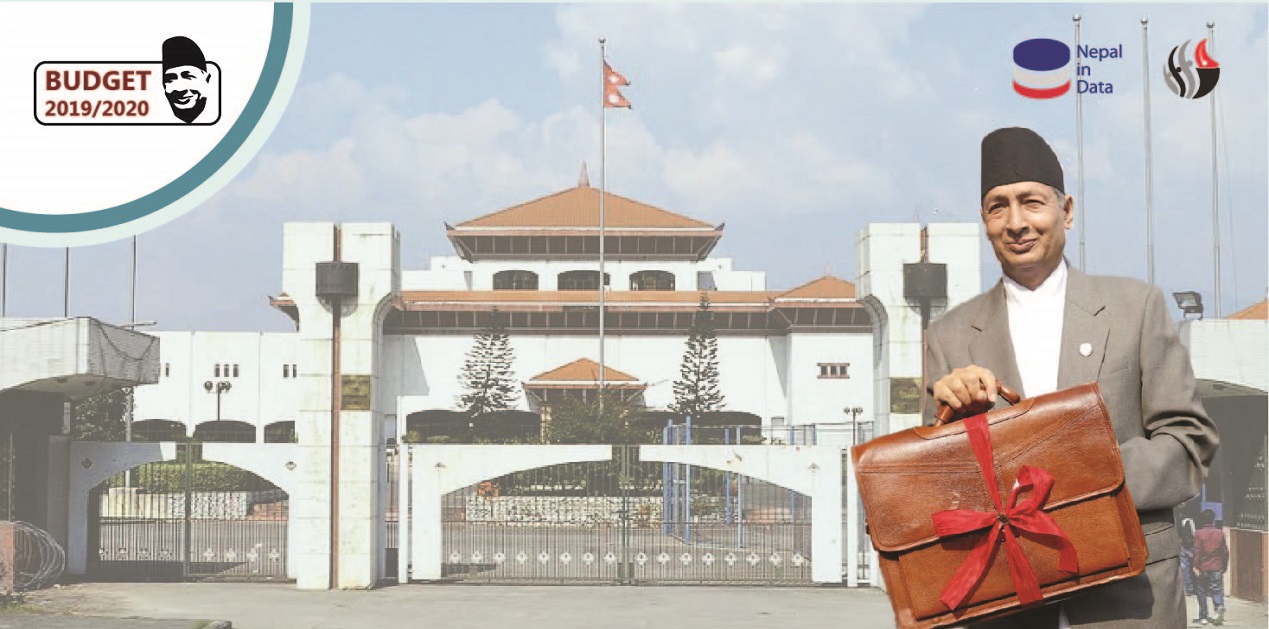On May 28, 2020, Finance Minister, Yubaraj Khatiwada, presented Federal Budget of Rs. 1,474 billion for the FY 2020-21 at a time when the entire nation is engulfed by coronavirus pandemic. In such an unusual period, expectations were that the budget would support such innovative health-related measures that could control the growing number of coronavirus cases in the country, which has taken a toll of 26 lives and over 11,162 people are infected as of June 25, 2020.
To meet the challenge posed by COVID-19, the government in the budget has announced a financial recovery package of Rs. 150 billion, which is almost 5 percent of the GDP. Also, Rs. 500 million has been set aside to provide subsidies on interest to those who want to start a new business. For such start-ups, only a 2% rate of interest on loans will be charged.
Though a small country as compared to its neighbours Nepal is well known for the export of manpower to different parts of the world. The country draws nearly US $ 8.1 billion a year from the remittance from the overseas migrant workers. After the outbreak of COVID-19, 280,000 migrant workers had already lost their jobs till early May 2020. Over 400,000 migrants are likely to return once the travel restrictions are lifted from the Gulf, South Korea, Malaysia, South Korea and India and hosts of other countries. Besides, hundreds of thousands of Nepalese migrant workers have already started returning to the country from India.
Therefore, the budget has allocated Rs. 20 billion for generating 600,000 jobs in the country. The budget for Prime Minister’s Employment Programme has been doubled to Rs. 11.60 billion to create additional jobs for 200,000 youth. Also, Rs. 19 billion will be mobilized as seed money from the Poverty Alleviation Fund to create 150,000 new jobs. Provision is also made to provide skills training to 75,000 people for which Rs. 4.34 billion has been allocated. Over and above, foreign nationals will not be given jobs without the permission of the Nepal government, which will mainly affect prospects of jobs for the Indian nationals.
Significantly, the budget claims to have focused more on the health than the other sectors. Accordingly, the budget in the health sector is pushed up to Rs. 90.69 billion in 2020-21, up from Rs. 68.78 billion in the current year. However, this health budget is merely 2.30 per cent of the country’s total GDP of Rs. 2,981 billion. Considering the magnitude of the coronavirus crisis that has been infecting more and more people each successive day, the amount allocated to the health sector is far from satisfactory.
In different quarters, it is doubted if the amount allocated to the health sector will be judiciously used. After the outbreak of coronavirus, a hefty amount of Rs. 10 billion was spent by the federal, provincial and local governments to address the coronavirus crisis until June 3, 2020, which means that close to Rs. 44 lakhs were spent per person on the 2,300 cases confirmed positive cases of coronavirus. But the number of infected cases from COVID-19 instead of declining is soaring up and it is not known when the peak will be reached. Realizing the seriousness of the situation caused by the pandemic, the government is even contemplating declaring health emergency in the country.
However, amidst this hour of a health crisis when almost all the sectors of the national economy are largely paralyzed, the federal budget aims at achieving 7 per cent rate of economic growth next year in 2020-21. Even the World Bank has projected that the rate of economic growth of the country will not exceed more than 1.5 to 2.8 per cent in 2020 and 3.1 to 4 per cent in 2021 in the best-case scenario, which is a deceleration from government’s earlier projections of over 6 per cent.
The Finance Minister missed an opportunity to mobilize additional funds in the health sector for controlling the coronavirus pandemic by scrapping the most controversial Local Infrastructure Development Programme (LIDP), which is also called Constituency Development Fund. For the last several years, the rationale of the Constituency Development Fund has been challenged both by the public and also in the court for its gross misuse. In the FY 2020-21, Rs. 40 million has been earmarked to each of the 240 lawmakers of the House of Representative, the lower house of the parliament. The total amount, thus, allocated for the Constituency Development Fund will be Rs. 6.6 billion. In the previous budget of 2019-20, Rs. 60 million was set aside to each lawmaker for the development of their respective constituencies for which Rs. 9.9 billion had been allotted. Even in India, the government has suspended the amount meant for the development of constituencies of the MPs and diverted it to activities aimed at controlling COVID-19.
The budget claims to have prioritized the agriculture sector for its role in generating employment. Rs. 41 billion is allocated to the agriculture sector, but it is just 1.31 per cent of the GDP. With this small sum, it will not be possible to launch any effective programme in the agricultural sector to address the problem of food deficit in the country. Also, the agriculture budget is meant more for importing chemical fertilizers rather than giving thrust to the domestic production of organic fertilizers. Prospects, therefore, are least to ensure green or white revolution in the agricultural sector.
Given the heightened tensions between the USA and China, many of the foreign investors, including the Americans, are likely to move their manufacturing units from China to other countries. Taking advantage of this situation, countries outside China, have started creating an environment for attracting such investors. India is one such country that is readying a pool of land twice the size of Luxembourg to offer companies that are preparing to move their manufacturing units out of China. But there is no such plan in this budget, though there is the potentiality to exploit the situation.
Mention is made in the budget for the establishment of land banks in 300 local levels in the next fiscal year in collaboration with the State and local level governments to enable the youth to get government and barren land on lease for agricultural farming. Such people could also be given agricultural tools from the government. An amount of Rs. 500 million has been allocated for investment in land banks. Instead the government could have used this money to vacate land at least up to one to two kilometers of the rivers to develop it as grazing land for the animals. By doing so not only the discharge of water in the river could increase, but also the problem of siltation in the rivers might substantially decline. More than this, prospects for the development of dairy sector could immensely increase.
In this new budget, there is a plan to establish 100 settlements for the landless people such as the Kamaiyas, Haliyas, Haruwas, Charuwas. In the Terai, nearly one-third of the households are landless. Experience shows that the Madheshis were not given a place in the resettlements. What guarantee is there that they would be included in the yet to be developed new settlements?
The budget has allocated Rs. 1.55 billion for the protection of Chure region of the Himalayas, but there is no plan to evacuate those who have encroached on the land and made unauthorized settlements there. Even this amount is so meagre that no effective plan could be developed to save this sensitive region. So long as settlements are not removed from the Chure, it is difficult to save this region, which is the lifeline, of entire Madhesh region of Nepal and also to the north Indian states.
Thrust has been given in the budget to trading with third countries through four seaports and three land ports offered by China to Nepal. It is doubtful if these ports would prove commercially feasible as transport cost would be so high. Those ports of China are very far as compared to the Indian ports and therefore it is doubtful if these ports will facilitate Nepal’s export trade.
Coronavirus has changed economic priority and even social norms throughout the world. If Nepal is serious about it, can it adopt a new model of economic growth which is based on self-reliance? It does not merely mean boycotting foreign goods but also substituting those with domestic products to generate employment opportunities and income in the country.
On the whole, the budget appears to be full of figures with least of solutions to the existing problems in the health and other sectors. It is not only viewed as ambitious but also unrealistic. Therefore, it is not known if the budgetary amount allocated to different sectors will be used effectively, which is because Nepal’s capacity to spend is limited. If the experience is of any guide, the amount set aside for different programmes will not be able to address the COVID-19 pandemic effectively and bring back the derailed national economy on the right track.
(The paper is the author’s individual scholastic articulation. The author certifies that the article/paper is original in content, unpublished and it has not been submitted for publication/web upload elsewhere, and that the facts and figures quoted are duly referenced, as needed, and are believed to be correct). (The paper does not necessarily represent the organisational stance... More >>
Image Source: https://myrepublica.nagariknetwork.com/news/finance-minister-khatiwada-presents-total-1-532-96-billion-fiscal-year-budget/











Post new comment